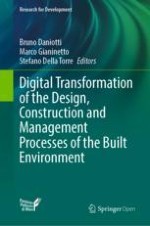
Open Access 2020 | OriginalPaper | Chapter
Development of a System for the Production of Disposable Carbon Fiber Formworks
Authors : Pierpaolo Ruttico, Emilio Pizzi
Published in: Digital Transformation of the Design, Construction and Management Processes of the Built Environment
Publisher: Springer International Publishing
Activate our intelligent search to find suitable subject content or patents.
Select sections of text to find matching patents with Artificial Intelligence. powered by
Select sections of text to find additional relevant content using AI-assisted search. powered by